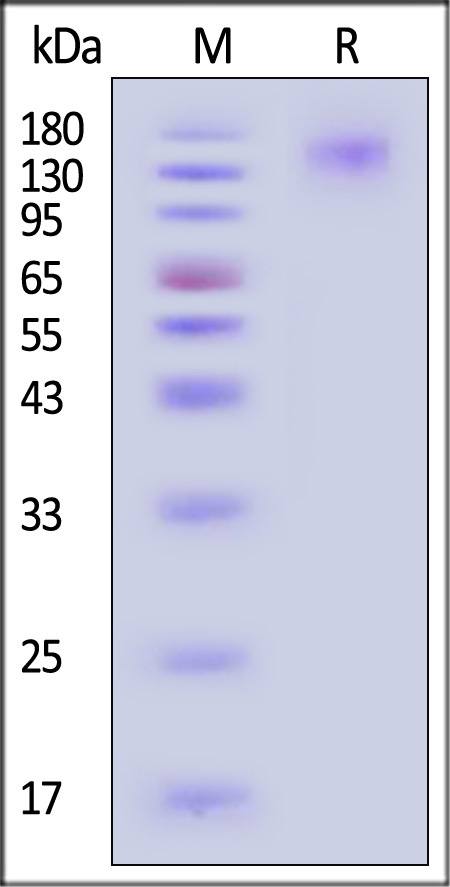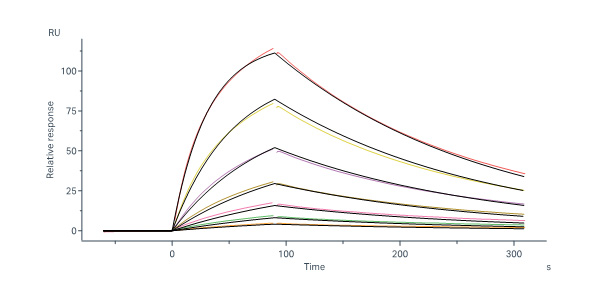分子别名(Synonym)
BSRPC
表达区间及表达系统(Source)
Cynomolgus SEZ6 Protein, His Tag (SE6-C52H4) is expressed from human 293 cells (HEK293). It contains AA Leu 20 - His 927 (Accession # A0A2K5WPJ4-1).
Predicted N-terminus: Leu 20
Request for sequence
蛋白结构(Molecular Characterization)

This protein carries a polyhistidine tag at the C-terminus.
The protein has a calculated MW of 99.9 kDa. The protein migrates as 130-180 kDa when calibrated against Star Ribbon Pre-stained Protein Marker under reducing (R) condition (SDS-PAGE) due to glycosylation.
内毒素(Endotoxin)
Less than 1.0 EU per μg by the LAL method.
纯度(Purity)
>90% as determined by SDS-PAGE.
>90% as determined by SEC-MALS.
制剂(Formulation)
Lyophilized from 0.22 μm filtered solution in PBS, pH7.4 with trehalose as protectant.
Contact us for customized product form or formulation.
重构方法(Reconstitution)
Please see Certificate of Analysis for specific instructions.
For best performance, we strongly recommend you to follow the reconstitution protocol provided in the CoA.
存储(Storage)
For long term storage, the product should be stored at lyophilized state at -20°C or lower.
Please avoid repeated freeze-thaw cycles.
This product is stable after storage at:
- -20°C to -70°C for 12 months in lyophilized state;
- -70°C for 3 months under sterile conditions after reconstitution.
电泳(SDS-PAGE)

Cynomolgus SEZ6 Protein, His Tag on SDS-PAGE under reducing (R) condition. The gel was stained with Coomassie Blue. The purity of the protein is greater than 90% (With Star Ribbon Pre-stained Protein Marker).
SEC-MALS

The purity of Cynomolgus SEZ6 Protein, His Tag (Cat. No. SE6-C52H4) is more than 90% and the molecular weight of this protein is around 130-170 kDa verified by SEC-MALS.
Report
活性(Bioactivity)-SPR

Anti-SEZ6 antibody captured on Protein A Chip can bind Cynomolgus SEZ6 Protein, His Tag (Cat. No. SE6-C52H4) with an affinity constant of 50.5 nM as determined in a SPR assay (Biacore 8K) (Routinely tested).
Protocol
背景(Background)
May play a role in cell-cell recognition and in neuronal membrane signaling. Seems to be important for the achievement of the necessary balance between dendrite elongation and branching during the elaboration of a complex dendritic arbor. Involved in the development of appropriate excitatory synaptic connectivity.























































 膜杰作
膜杰作 Star Staining
Star Staining











